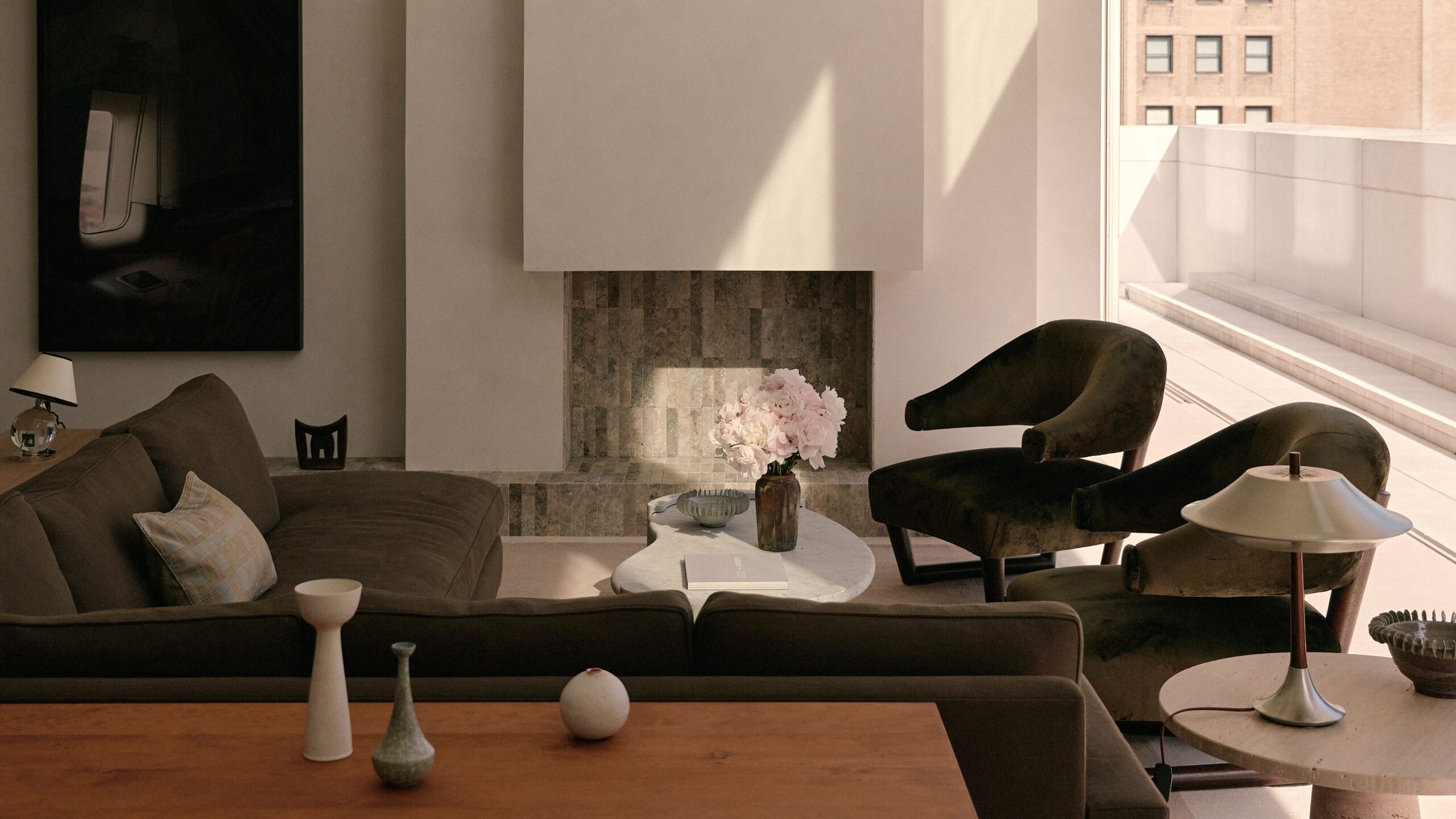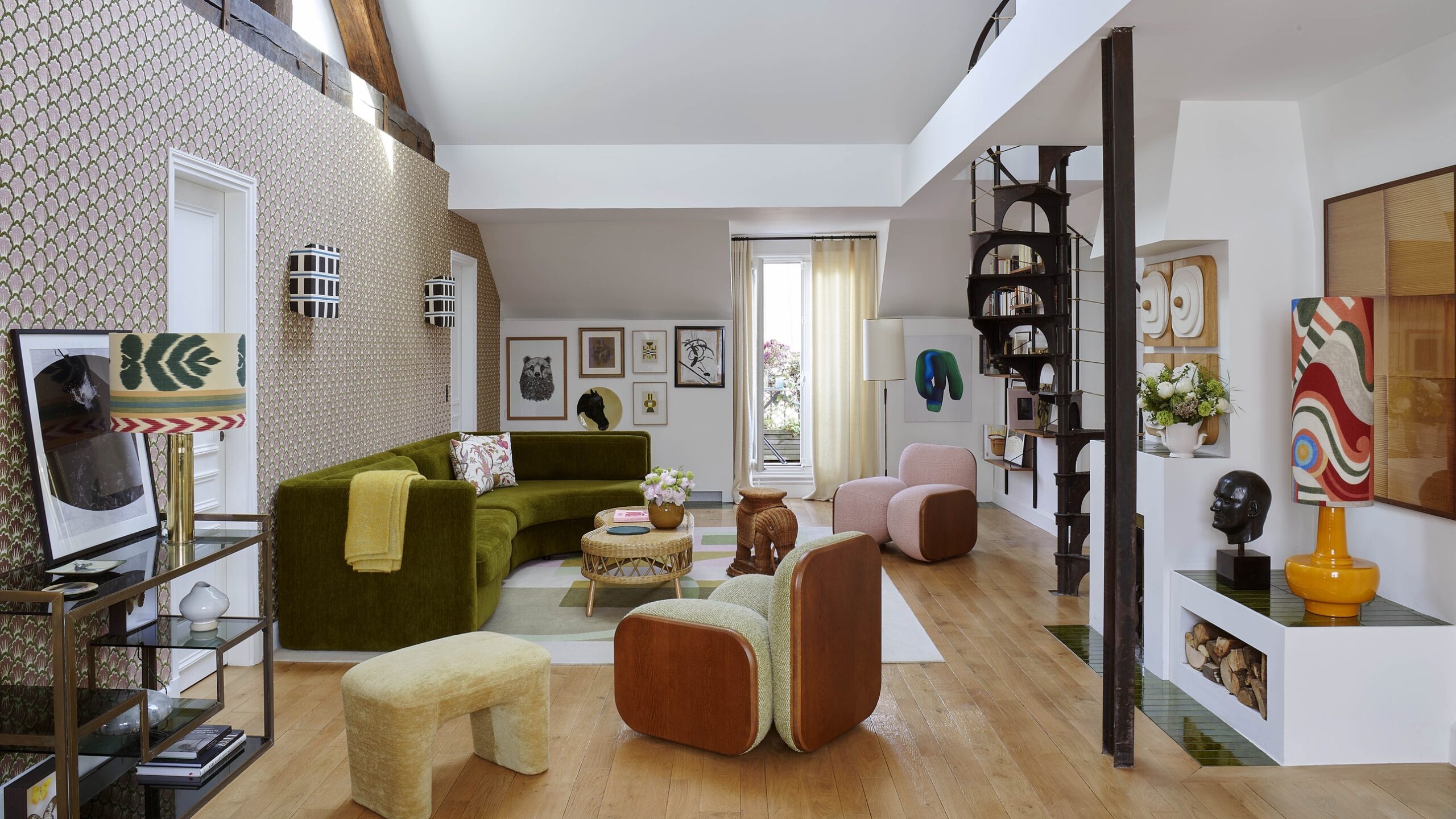
Inside a penthouse perched above Manhattan
Ask the Argentine American designer Sebastian Zuchwicki to describe his technique, and would instead describe the equation. “Design is like an algebra problem,” he says. “We have a powerful formula that’s locked in volume, proportion, texture, and material. Apply it to any client’s style, and it works.” The designer, who trained under Studio Mellone and Studio Sofield before launching his eponymous company two years ago, embodies that formula beautifully in his latest project, a modern penthouse designed by Shigeru Ban. The nearly 4,000-square-foot house sits on top of another structure as if it had emerged from under the roof’s surface a century and a half after the current building was erected.
For Zuchowicki and his team, the challenge was to transform a modern white space into a home and warm it through volume and texture, while honoring the vision set forth by the famous Japanese architect. The clients, who maintain a primary residence elsewhere, wanted their Manhattan home to honor their Japanese-American heritage, so Zuchwicki took them to Chelsea FC. Dobrynka Salzman Gallery To gather inspiration from a list of Japanese American designers. For furnishings, “we always try to promote our customers,” says Zuchowicki. “I’d like every piece to be classic, but that’s not always realistic.” So when a suitable vintage can’t be found, contemporary will do—only if the piece has a story full of rich history or soul, like the Christopher Baker chandelier hanging in the dining room. “It’s a contemporary piece, but it harkens back to traditional Japanese lanterns, and has evolved to accommodate today’s craftsmanship and living standards,” explains Zuchwicki. In addition to the lantern, many of the pieces in the home are custom designs by Zuchowicki’s studio, including the American walnut dining table above, a sectional sofa in the living room, and a clever smoking table in the bedroom. “Our rule is five degrees of separation. We want to make it our own, to find and bring out the flavor that the vintage piece offers, and to give it a twist.”
And just as every crown needs a jewel, every room needs a focal point. But rather than a bar or TV to anchor the space, Zuchwicki and his team dreamed up a (non-functioning) fireplace—more an architectural statement than an ornamental one—featuring stucco and silver-tiled travertine from key To give texture and play the geometric lines in the marble that run the length of the outdoor living area. On either side of the fireplace, two clever pocket doors open discreetly to reveal a more relaxed living space. “It feels a bit old-fashioned and modern to have a fireplace at the front of the room to divide the space, with walkways on either side that open up to an informal den in the back,” he explains. “I love that there are private areas: one living area that’s a little more casual, and one that’s more formal, while still being spaced and undivided.”



